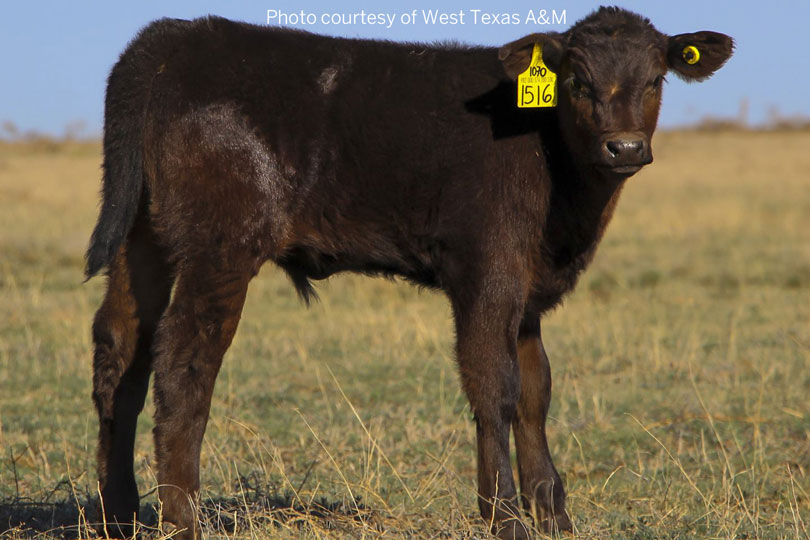By Jessica Domel
Multimedia Reporter
A project at West Texas A&M University (WTAMU) designed to improve beef quality and yield through cloning continues to move forward with positive results.
Although research started years before, the project began in 2012 when the university cloned a bull “Alpha” from the carcass of a prime steer, yield grade one.
Three heifers were cloned from another prime, yield grade one carcass. They’re referred to as Gammas 1, 2 and 3.
“They had 13 calves. Nine of those were bulls and four were heifers. We kept two of the bulls, and we fed out seven of those steers and harvested those at the meat lab,” Dr. Ty Lawrence, professor of Animal Science and director of the Beef Carcass Research Center at WTAMU, said in an interview with the Texas Farm Bureau Radio Network.
Harvest yielded promising results from the original F1 cross, Lawrence said, and now the lab is testing the Alpha-Gamma 1 sire to see how he can influence the transmittal of quality and yield genetics simultaneously to make a better and higher-yielding beef product.
Researchers are also doing sire comparison tests.
“The first one is comparing Alpha to three popular sires that would be used in breeding stock, primarily, but secondarily in commercial cattle as well,” Lawrence said.
The sires are Angus, Simmental and Charolais.
“We bred those three sires and Alpha to 1,274 cows in Kansas. Those cows were allowed to calve, and the calves were grown and finished in the feedlot,” Lawrence said. “From those cattle, we have 10 pens of feedlot steers and heifers. All but one of those pens has now been harvested.”
In a similar trial, researchers are comparing Alpha to his first son, Alpha- Gamma 1, and four sires.
“This time, the cow base was about 1,005 cows, and those calves were born in September of 2017,” Lawrence said. “They’re with their mothers right now, just growing calves. We anticipate weaning those later this spring and then putting them in a finishing lot later in the summer. We’ll grow those guys out and finish them and find out how their carcasses performed.”
Lawrence said researchers are going to find out from the sire side how much influence researchers could have toward a higher-yield, higher-quality beef product.
“We know we won’t get that many prime carcasses just because it’s still a rarity even in the population we’re looking for, but we’re shifting it toward more prime, which undoubtedly, because these cattle are black-hided, leaves the door open for a greater frequency of Certified
Angus Beef and an even greater frequency for choice beef,” Lawrence said. “It reduces the likelihood that you’re going to have a select carcass. Similarly, these cattle are lean and have a large ribeye, and they’re not likely to be a yield grade four or five.”
The program is already receiving requests from ranchers interested in buying straws for their own herds.
“The scientist in me wants to know what we have before we let it go into the community, but we do intend to allow producers across America to purchase this semen,” Lawrence said. “I just want to know a little bit more about the carcasses from those sires before we let it go.”
Lawrence said they’ll continue to look for original clones and crossbreed.
“We just want to keep advancing toward a better beef product, particularly in the realm of better quality and better yield,” Lawrence said.

